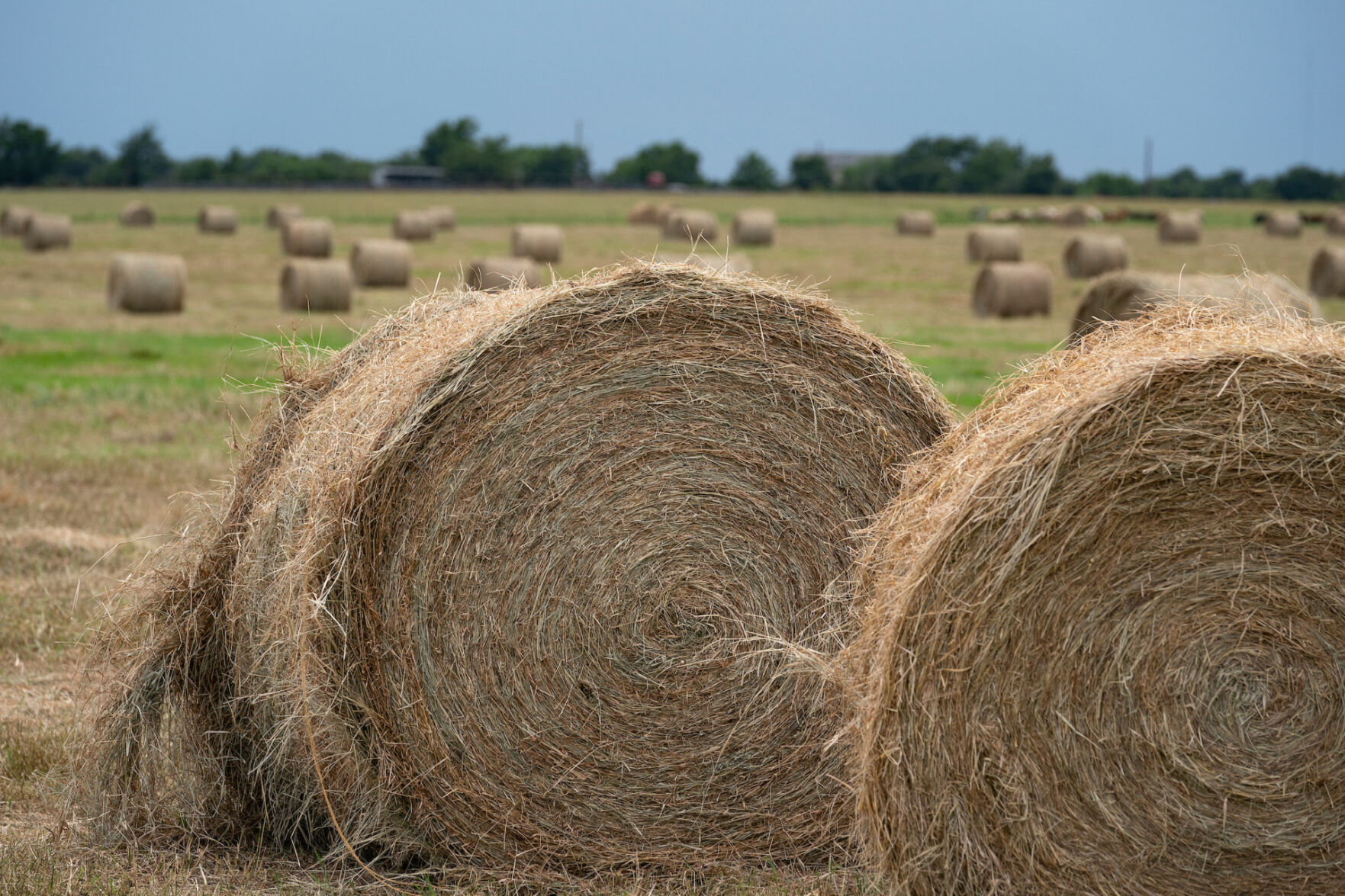Growing conditions greatly improved for many Texas forage producers following deep drought, but it takes more than just rain and sun to grow Bermuda grass, according to Texas A&M AgriLife Extension Service experts.
Moisture over the last few months has reversed hay production and grazing outlooks for Texas producers. But management of hay meadows and pastures over previous seasons and going forward will factor heavily in yields, said Vanessa Corriher-Olson, Ph.D., AgriLife Extension forage specialist, Overton, and Larry Redmon, Ph.D., professor and associate head for AgriLife Extension in the Texas A&M Department of Soil and Crop Sciences, Bryan-College Station.
So far, despite good growing conditions and harvest reports from many areas around the state, Corriher-Olson said many producers’ warm-season grasses are behind schedule or still recovering from overgrazing and inadequate fertilization.
“At least around here, Bermuda grass just started growing,” she said. “I am seeing some bales, but most of the calls I am getting are about Bermuda grass stands not doing so well.”
Many AgriLife Extension agents around the state were reporting good hay yields and grazing and improving production conditions, however some areas were beginning to show signs of decline due to high temperatures and drying conditions.
Forage producers seeing mixed results
Recent rainfall has set growing conditions up well, but forage production has not gotten off to a strong start, Corriher-Olson said. Drought stress, lack of fertilization and late freezes followed by humidity-borne fungi from recent rains have set many producers’ grazing and potential hay production back despite good soil moisture conditions.
Corriher-Olson said much of a grazing pasture or hay meadow’s early season performance is likely related to maintenance of the stands. Many producers reduced fertilizer applications or did not fertilize Bermuda grass stands due to record-high fertilizer prices last year.
Nutrient deficiencies led to poor growth, thinning stands and lack of vigor during stressful weather, she said. For instance, potassium deficiencies and wet conditions have led to fungal outbreaks, including Bipolaris leaf spot, that are setting already thinned Bermuda grass stands back even further.
“Pastures that were not fertilized or that were overgrazed are probably struggling,” she said.
Fertilization, maintenance key to forage success
Corriher-Olson said rebuilding stands will require time, effort and investment. She suggests starting with a soil test to make sure pastures receive sufficient inputs to adequately restore nutrient availability.
Restoring nutrients in grazing pastures is as critical to performance as it is in hay production, she said. Livestock manure returns some nutrients to the soil, but pastures that were not fertilized correctly are likely equally deficient.
“Fertilizer prices have softened some, so that is a positive,” she said. “They’re still not cheap, but we need to think about the short- and long-term implications of our management decisions.”
Managing weeds should also be a priority to help warm-season forages flourish, she said. Without proper control, broadleaf weeds can outcompete Bermuda grass for fertilizer, moisture and sun.
Redmon said it costs less to maintain healthy pastures and hay meadows than to restore productive Bermuda grass stands.
“Fertilizing is expensive, but when you don’t fertilize Bermuda grass there are unintended consequences that pop up,” he said. “Bermuda grass was bred and selected to grow on fertilizer, so you’ve got to feed it. If you don’t, it thins and opens up. Then you have to spend more money on herbicides, or it can’t compete with broadleaf weeds, or even worse, grassy weeds can establish.”
Hay production ramping up
Both Redmon and Corriher-Olson agree the price for round bales of hay from moderately managed meadows are unlikely to fall below $100. Improved supplies and better grazing conditions may moderate hay prices, but higher fertilizer, herbicide, fuel and labor costs have pushed the break-even per-bale price beyond $100 for quality hay.
Fertilizer is 50% to 60% of the cost to produce a single bale of hay, Redmon said.
East Texas producers with well-maintained hay fields and the ability to harvest around early spring weather could have high expectations for hay production this season, he said. Some producers around Beaumont are already cutting or nearing a second harvest and have the potential for four cuttings this season.
Cooler nighttime temperatures held up warm-season emergence and production further north, he said. Nighttime temperatures need to be consistently above 60 degrees for Bermuda grass to become active.
With higher temperatures settling in, producers now need windows of sunny days to cut, cure and bale, Corriher-Olson said. That has been difficult in many parts of the state due to consistent rain and forecasts with chances of rain.
“Agriculture is a heck of a business to be in because you’re always at the mercy of Mother Nature,” Redmon said. “But we can always plan ahead and stick to management plans in the hopes the weather cooperates, because that helps us maximize the opportunities we have and avoid setbacks.”




